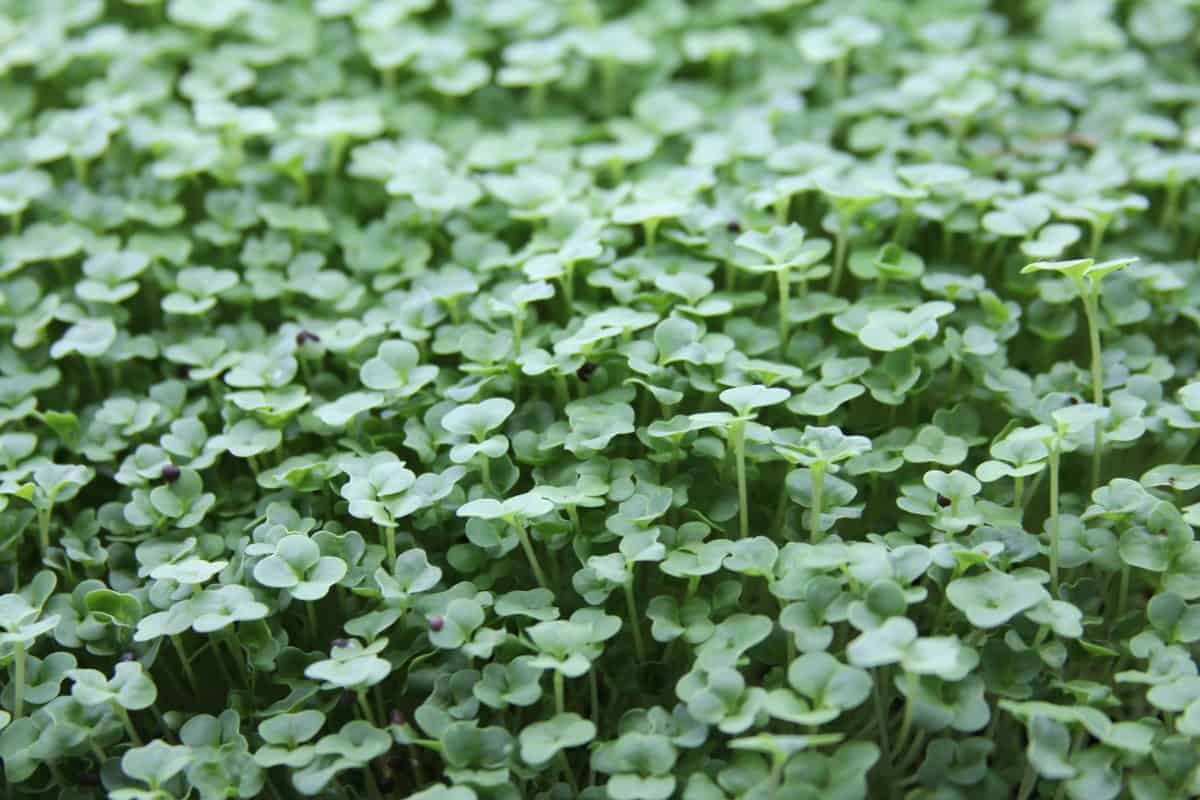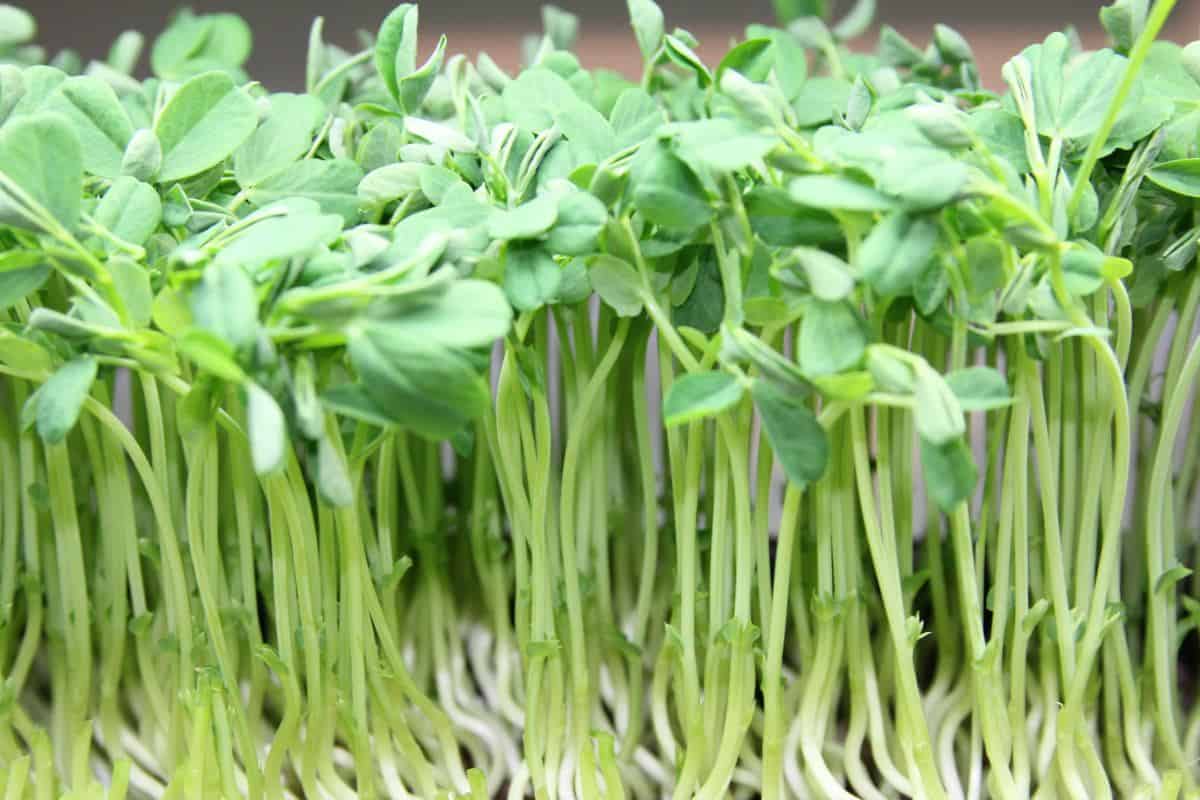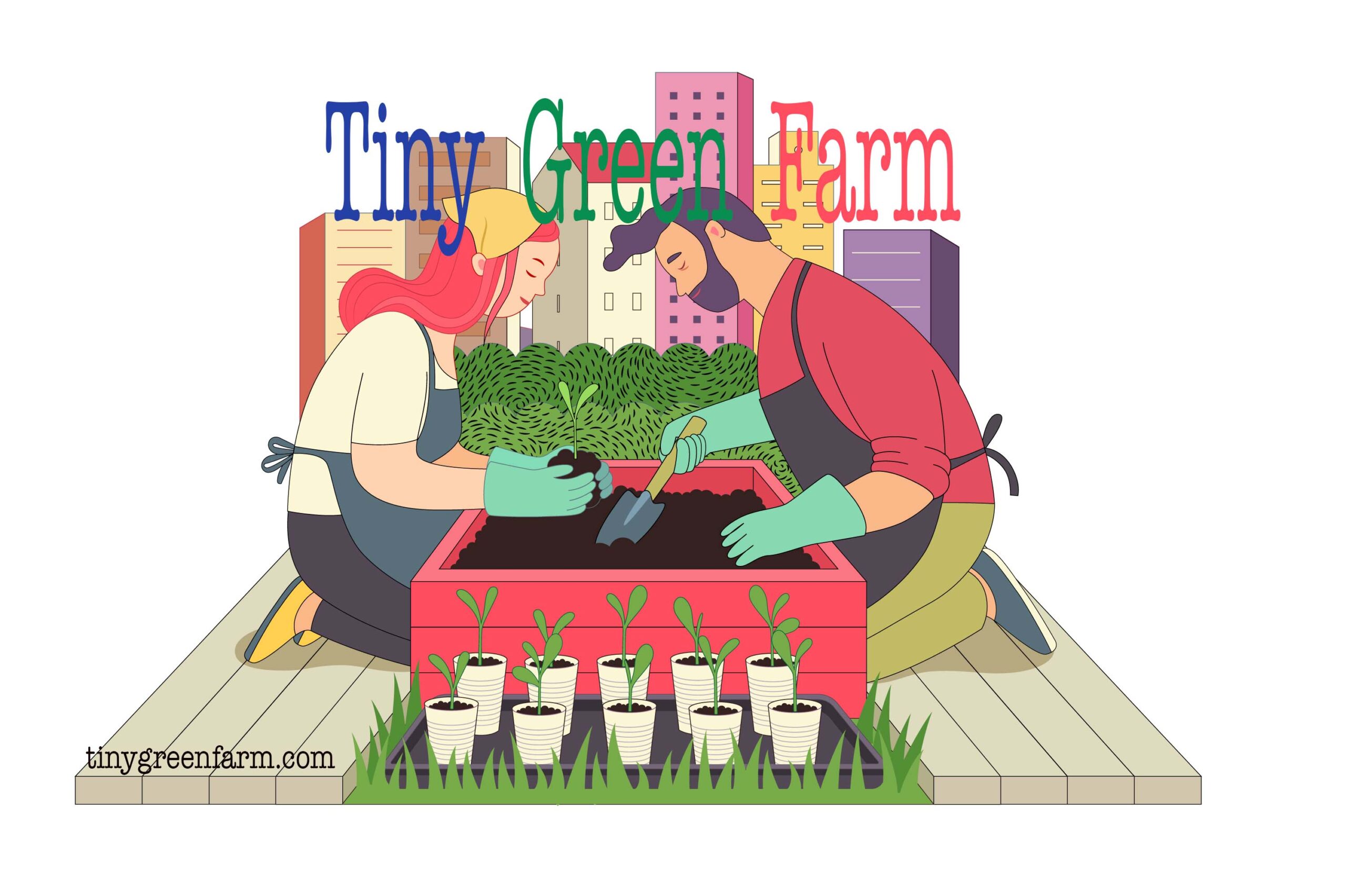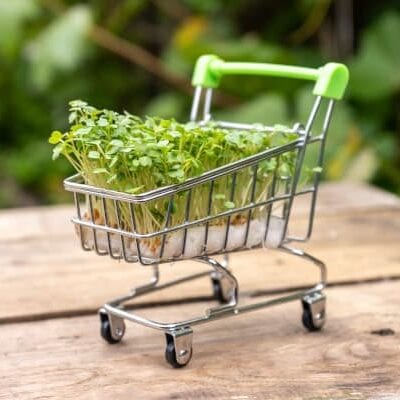Microgreens are often confused with sprouts, although they can be used interchangeably. In this article, I will give an introduction to what microgreens are and how to use them.
Microgreens are vegetable greens that are harvested after 10 to 20 days of planting. They can be grown from a variety of seeds, including vegetables, herbs, grains, and legumes. They are usually 1 to 3 inches in size and contain a single stem with just a few, small leaves.
Microgreens have highly concentrated nutrient content and oftentimes intense flavor. They also display bright colors, which makes them a perfect ingredient to garnish any dish. Microgreens differ from sprouts and baby greens in that they are harvested in a different stage of plant growth, somewhere in between sprouts and baby greens.
What are Microgreens?
Microgreens are vegetables that are not grown to full maturity, but are harvested in their early stage of development, usually within the first two weeks. When plants germinate, they first produce two small “seed” leaves, which are part of the embryo within the seed. After these first seed leaves appear, the plant begins to grow a stem and produce “true” leaves. Microgreens are harvested either after the seed leaves appear or after the first true leaves show up. They are usually cut just above the soil, so they include the stem as well.
Some microgreens taste better in the seed leaf stage while others reach their optimum flavor at the true leaf stage. When you grow them at home, you can decide when to harvest each microgreen based on your preference.
Commercially grown microgreens are sometimes harvested at the true leaf stage for various reasons: plants in their seed leaf stage are too delicate for packing and shipping; true leaf microgreens also pack more weight and fill more volume, which is an important consideration for commercial growers.
The term microgreen is not a scientific term, so there is no clear definition of what plant growth stage is considered to be the microgreen stage. It’s a marketing term used to differentiate microgreens from sprouts and baby greens. Sprouts are harvested sooner than microgreens while baby greens are allowed to grow longer.
The Main Types of Microgreens

Microgreens can be grown from a variety of seeds, seeds that produce edible leaves. Not everything works though. Tomatoes, squashes, peppers, for example, are not grown for their leaves, so they wouldn’t produce edible microgreens.
Here are the main types of microgreens that I categorized according to food groups. Botanically, these plants are grouped differently, for example amaranth, which we consider a grain, is related to beets and spinach. But here I am using the common food groups of vegetables, herbs, grains, legumes, and seeds.
Vegetables

Leafy green vegetables are obvious choices for microgreens. Some popular varieties include kale, arugula, red cabbage, broccoli, chard, mustard greens, and Asian greens. In addition, many root and bulb vegetables produce delicious edible leaves such as beets, turnips, carrots, radish, kohlrabi, and fennel. Leafy green microgreens are popular because of their high nutrient content.
Herbs
Herb greens are popular due to their robust flavor and delicate shape and texture. Common varieties grown for microgreens include basil, chive, dill, and cilantro.
Grains
Amazingly, even the leaves of some grains are used as microgreens. Amaranth, for example, is used for its beautiful red color to add visual interest to dishes. Wheat is one of the sweetest grains and so are its leaves, which are usually made into wheatgrass juice. Not all grains produce edible microgreens, and some are not very tasty either, so make sure to grow or buy microgreens that have been already tested or approved for consumption.
Legumes

Legumes have been grown for their sprouts for a long time, but many beans and lentils also produce tasty microgreens. Pea shoots are the most popular, but other legumes such as mung beans, adzuki beans, chickpeas, and lentils have also been grown for their greens.
Seeds
Plants that we consume as seeds can also be eaten as microgreens. The most well-known and popular are sunflower greens. In addition, flax and chia seeds are also grown as microgreens.
These are just some of the more common microgreens. But there are at least a hundred plants that people have tried to grow and, likely, they will discover more.
The Advantages and of Microgreens
Flavorful
Most microgreens are very flavorful and that’s one of the reasons they have been popular with chefs for so long. Just a small amount of microgreens used as garnish can add a ton of flavor. Microgreens usually taste like their more mature relatives; so radish microgreens are sharp, pea shoots are sweet, and broccoli microgreens taste just like broccoli. However, the flavor is often more concentrated, so for example if you don’t like hot and sharp things, don’t use a lot of mustard and radish greens.
Nutritious
Microgreens have higher nutritional densities compared to mature leaves according to a study by the Department of Nutrition and Food Science at the University of Maryland.
Some microgreens have a nutrient concentration up to 40 times higher than their mature counterparts. Some of the nutrients the study measured include vitamins A, C, E, K, lutein, and beta-carotene.
Another study found the microgreens form the Brassica (aka cabbage) family have higher variety and concentration of polyphenols than adult plants. Polyphenols are antioxidants that play an important role in the prevention of cancer, cardiovascular disease, diabetes, and neurodegenerative diseases.
Although these studies are encouraging, there aren’t many of them. Hopefully, scientists will conduct more research on this increasingly popular group of food crops.
Easy and Quick to Grow
Microgreens take 7 to 14 days to grow. This short growth cycle, if repeated at regular intervals, can produce a regular source of fresh greens.
Most microgreens are also easy to grow. You can grow them indoors in containers, in a greenhouse, and outdoors. They can be grown with natural light or artificial light, or a combination of the two. They can be grown all-year round, in any climate, when grown indoors.
They can also be grown in a variety of mediums. They will do well in soil, but they can also grow without soil, hydroponically, with the help of a nutrient solution.
Microgreens require little space and can be grown in small containers at home. They can be sown very densely, and all you need to harvest them is a knife or a pair of sharp scissors.
Disadvantages of Microgreens
The main disadvantage of micro-greens is that some of the seeds can be expensive. Because you harvest the plants while they are relatively small, you don’t get as much volume out of each seed as you would when you grow them to their full size. And you have to keep repeating the process every week if you want a steady supply of microgreens. As a result, microgreens can be pricey and can cost around $20 per pound or more, depending on what size bags you buy.
How to Use Microgreens
Microgreens can be eaten raw or cooked. There are really no rules, it’s up to your imagination how you use them. Smaller microgreens are best eaten raw because they are already soft and delicate. If you cook them, you will lose the crunchy texture which is one of their best features. Microgreens in this category include radish, broccoli, and herbs like basil and cilantro.
Thicker greens such as sunflower greens, pea shoots, and other legume greens can be lightly sautéed for a few minutes. These greens have chewier stems, so they can be made softer by cooking.
Microgreens can be added to smoothies. They will be easier to blend than their more fibrous adult versions and you will need a lot less of them to get the same amount of nutrients.
Salads are an obvious choice for microgreens. You can combine them with larger salad greens or just make a salad of various microgreens. Make sure to include enough sweet leaves so you are not overpowered by the peppery, spicy ones.
Microgreens can be added to practically any dish as a garnish. Soups, pizza, casseroles, rice dishes, pasta, and sandwiches.
The ticker stems like sunflower seeds and legume shoots work well in Asian stir fries. Just add them at the very end and cook for only a few minutes until they wilt.
Related questions
Where to buy microgreens?
Microgreens are often sold at larger farmers markets, health food stores, and through CSAs. Some companies also ship microgreens from their online stores.
How long will harvested microgreens last?
If kept in a container or plastic bag, microgreens can last for one to two weeks. They keep really well if properly stored. They need to be stored dry though, and only washed just before use.


Leave a Reply